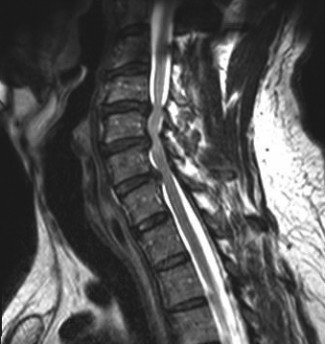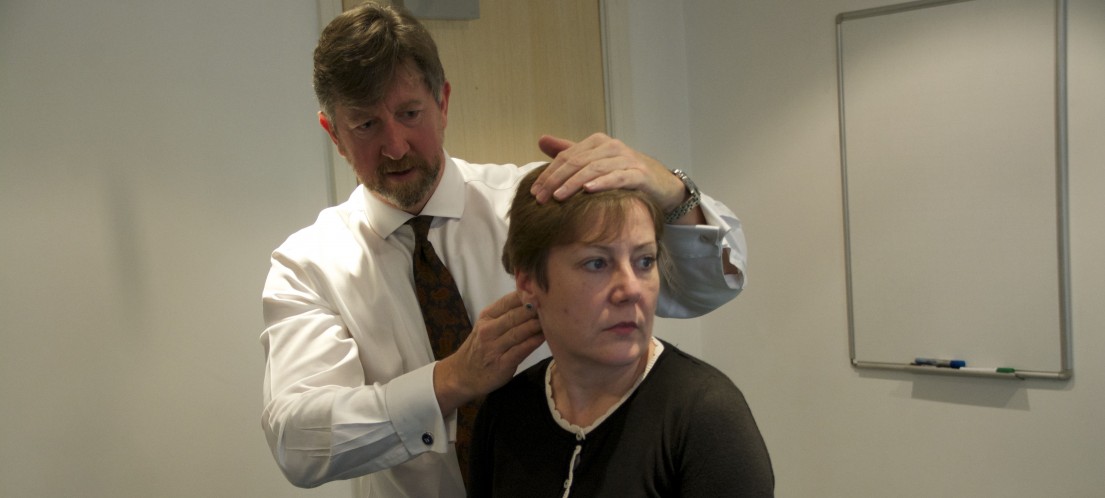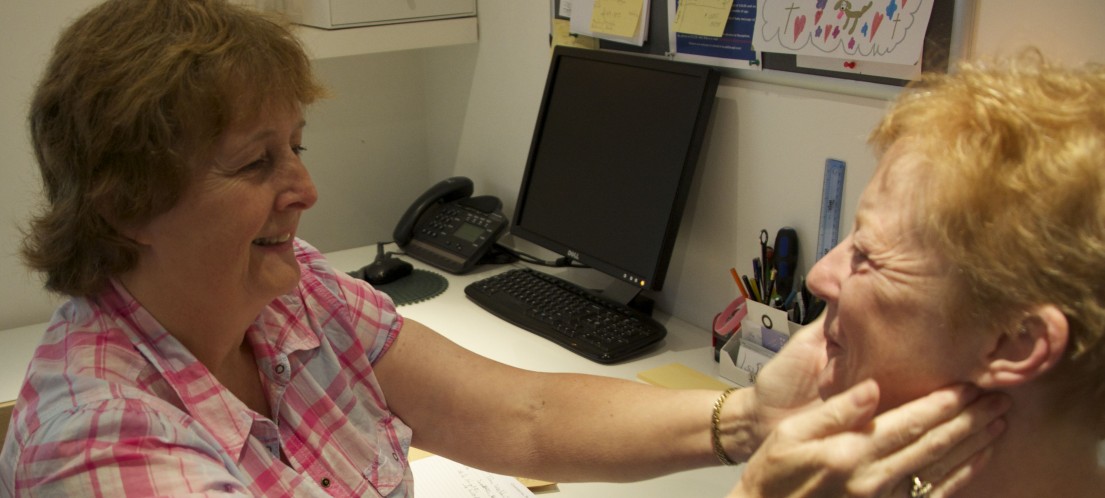With Chronic Neck Pain you must accept that something in your life will need to change, you have to remove something that makes you worse or add in something to make you better
Chronic Neck Pain
Chronic Neck Pain can come after repetitive physical work but can also be postural and relate to sedentary workers
Chronic Neck Pain
The key to reducing Chronic Neck Pain is identifying what it is that you do that irritates it, it could be something in your environment, such as work position or repetitive action or it could be your posture. Technically Chronic Pain is pain lasting longer than 8 to 13 weeks (definition dependent upon research criteria), however according to the literature this classification is at best arbitrary, at worst is not relevant, useful or true.
It is better to consider Chronic Pain as Pain which lasts longer than the original problem should take to recover. It is happening because your body is starting to process information from the site of the problem in a different way, effectively your body is regarding the pain as the problem rather than the damage that caused it, and that is self-perpetuating.
It is important to understand that once Pain has become Chronic a treatment only solution is very unlikely to work, something in your lifestyle will need to change. You will either have to identify and eliminate a problem or understand and work to correct a weakness. With Chronic Neck Pain there is often a recurrent trigger that we have to identify and eliminate.
The Spine Team are specialists in Chronic Pain, we recognise your situation is unique and combine treatment and patient management so you can understand your problem and start to help yourself.
What is Pain?
Pain is not a sensation in the way that ‘touch’ is a sensation; rather Pain is a response from the brain to information after an initial warning message of tissue damage (nociception). Tissue damage is detected by distant sensors and transmitted via the spinal cord to the lower brain centres (the parts of the brain that work without thinking).
The initial response of the lower brain will usually be to suppress the pain while it informs the middle and higher parts of the brain. The higher part of the brain, the thinking part, will work out where the pain is and what is the likely cause, the middle part of the brain is responsible for your emotional response to the pain and will be looking for reassurance from the higher part that everything will be OK and there is no threat.
So let us say that you were painting the ceiling and hurt your neck, the sensors pick up the damage, the lower part of the brain gets the damage report, it informs the higher part where the pain is mapped and the question of what and why is answered (you have held an awkward position for too long), the emotional middle part of the brain is reassured and the initial pain suppression, which is both hormonal and neurological, continues. You are still in pain but you realise that you will recover.
Pain as the Problem
Using this model there are two things that can go wrong. Firstly, the higher part of the brain cannot explain the problem (painting the ceiling would be a bad example here), that would be a concern and the emotional area would not be reassured. Secondly, if you have previous bad experiences in the area or a preconception that it is a threat (in the case of too much painting that could be a previous experience of a period off work that cost a lot of money or a preconception based on a family member who had a similar onset of pain and never recovered fully) the middle, emotional, part of the brain will over-ride the higher part and rather than the pain being suppressed it could remain high or even be amplified.
Why would that happen?
Quite simply. You recall that pain is the result of a damage report, if there is a failure to understand or a perceived threat from the damage report, rather than suppressing the pain, the brain goes looking for more information, that however gets into a ‘feedback loop’ and can spiral out of control.
Postural Neck Pain
Neck Pain frequently comes for no good reason, it can feel very severe, there is no way of assessing the damage because you cannot see it, you have no way knowing whether it can happen again because you don’t know why it happened this time, it is a pain that you cannot control and you may seriously believe could affect your life in a negative way.
Here the pain will be initially suppressed but after the threat cannot be understood and there is no feeling of control this will reverse and the lower brain will amplify the damage report to collect more information. How you manage the Pain now will affect whether it will be a short episode (Acute Neck Pain) or become Chronic Neck Pain.
Transition to Chronic Neck Pain
Once the pain is felt a vicious circle quickly develops where the initial damage report leads to local swelling and soreness, the body responds by tightening the area using the muscles between the bony segments of the spine. This prevents movement but can be very powerful with a possible compressive spasm of about many times the weight of your head. The spasm in turn compresses the sore area and increases the pain, and so on. Once the damage report is amplified the brain and body will begin to process the information in a different way, a process called ‘Sensitisation’.
‘Peripheral Sensitisation’ due to Neck Pain can occur if a damage report from a particular area is amplified for long enough, and that may only be a few days, the sensors and nerves will continue transmit more signal even though there is no more damage, and thus a normal load can be interpreted as damage.
‘Central Sensitisation’ due to Neck Pain can occur when the emotional response to the lack of understanding of the pain is increased due to previously held beliefs and expectations by the sufferer and the constant search for more information from the damage sensors maintains the state of amplification and this can increase to cover other similar sensors giving a Sensitisation of the whole body.
The Spine Team Approach
Your Spine Team practitioner will be able to identify Chronic Pain and distinguish it from serious illness. We will try and provide you with a clear understanding of the mechanism of your pain and arrange treatment to help the area of the pain and help you understand what you can do to process that pain in a different way. Once you have made a recovery from Chronic Pain you will remain vulnerable as the changes in processing are lasting, we will work with you to structure the self help through posture and taking regular breaks from repetitive work and maintenance with treatment, massage and exercise that you will need to maintain control of your problem.
If you are in a situation where your pain is lasting beyond your expectation then the Spine Team can help you. The ‘Patient Centred Model’ is designed to identify, inform, treat and teach the body to respond appropriately to normal load with an individual Rehabilitation strategy.
The Spine Team specialise in treating and managing Back Pain that has not responded to other treatments.


Chronic Neck Pain is often postural, a better understanding and better management of your day can help a lot

Degenerative change, osteoarthritis and spondylosis are all normal changes as you age, they are not painful, it is the way your body responds that causes pain

The ‘Patient Centred Model’ is designed to identify, inform, treat and teach the body to respond appropriately



